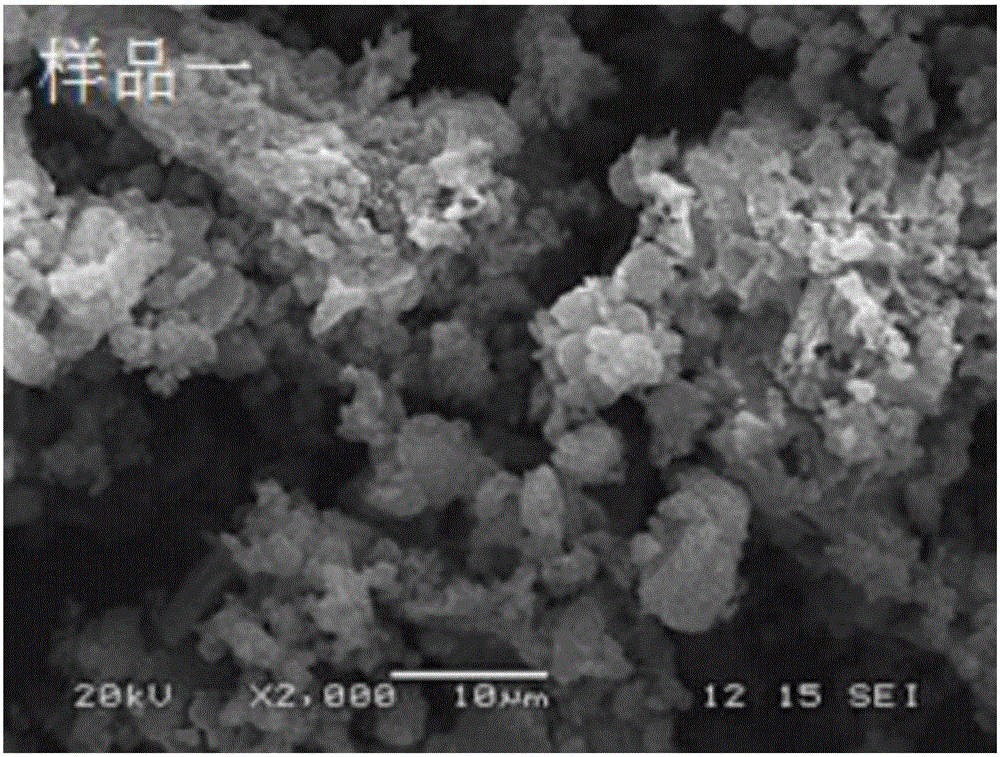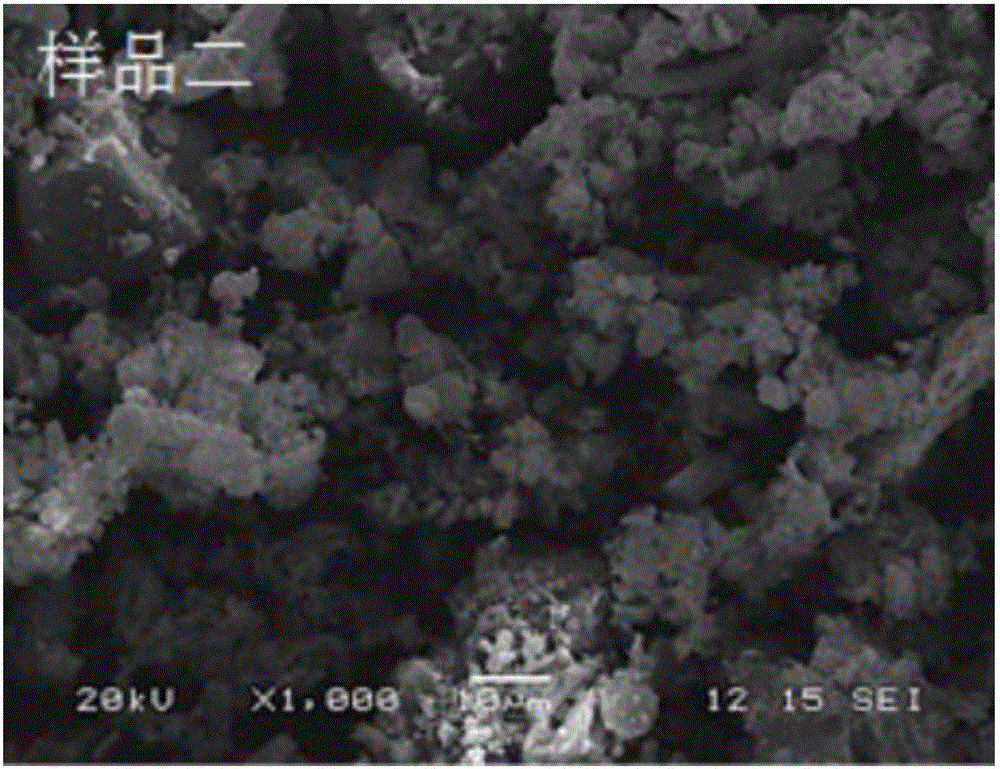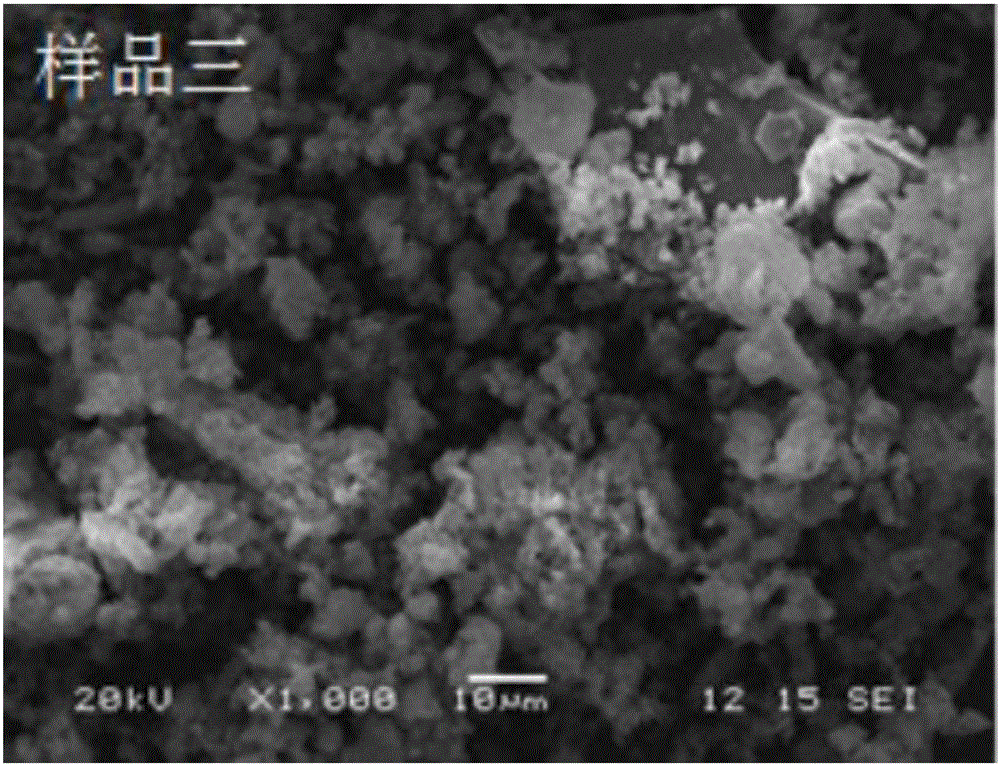Biological carbon prepared from tobacco stems as well as preparation method and application thereof
A technology of biochar and tobacco stems, applied in the field of agricultural chemistry, can solve the problems of strains that are difficult to decompose and cannot be returned to the field on the spot, and achieve the effects of strong adsorption capacity, large specific surface area, and full utilization of resources
- Summary
- Abstract
- Description
- Claims
- Application Information
AI Technical Summary
Problems solved by technology
Method used
Image
Examples
Embodiment 1
[0049] After the tobacco stem waste is pulverized, select 60-mesh granules, stir 5g of tobacco stem (granule) biomass with 60ml of deionized water according to the ratio of solid-liquid ratio of 1g: 12ml, and then seal them into an autoclave. Under the condition that the heating rate of the electric furnace is 10-20°C / min, conduct hydrothermal carbonization at 180°C for 5 hours, wash with deionized water until neutral after natural cooling, filter with suction, dry at 70°C for 10 hours, and grind to obtain tobacco stems biochar material. Mix the obtained tobacco stem biochar with KOH activator aqueous solution (KOH mole percentage is 5 mol%) at a ratio of 1:4 (solid / liquid weight ratio) and activate it for 2 hours. After drying, it is calcined at 400°C for 2 hours under the protection of nitrogen, and cooled naturally. Afterwards, it was washed with deionized water until neutral, and the biochar was obtained after drying. The SEM image of the prepared biochar is shown in fig...
Embodiment 2
[0052] After the tobacco stem waste is pulverized, select 60-mesh particles, stir 5g of tobacco stem biomass and 60ml of deionized water according to the ratio of solid-to-liquid ratio of 1g: 12ml, and then seal them into a high-pressure reactor. Under the condition of 10-20°C / min, conduct hydrothermal carbonization at 180°C for 5 hours, wash with deionized water until neutral after natural cooling, filter with suction, dry at 70°C for 10 hours, and grind to obtain tobacco stem biochar material . To obtain tobacco stem biochar with K 2 CO 3 Activator aqueous solution (K 2 CO 3 The mole percentage is 5mol%) mixed with 1:4 ratio (solid / liquid weight ratio) and activated for 2h, dried and calcined at 400°C for 2h under nitrogen protection, cleaned with deionized water to neutral after natural cooling, and dried Get biochar. The SEM image of the prepared biochar is shown in figure 2 .
[0053] The particle size of the prepared biochar is 0.6 μm, and the specific surface ar...
Embodiment 3
[0055] After the tobacco stem waste is pulverized, select 60-mesh particles, stir 5g of tobacco stem biomass and 60ml of deionized water according to the ratio of solid-to-liquid ratio of 1g: 12ml, and then seal them into a high-pressure reactor. Under the condition of 10-20°C / min, conduct hydrothermal carbonization at 180°C for 5 hours, wash with deionized water until neutral after natural cooling, filter with suction, dry at 70°C for 10 hours, and grind to obtain tobacco stem biochar material . Mix the obtained tobacco stem biochar with KOH activator aqueous solution (KOH mole percentage is 5 mol%) at a ratio of 1:4 (solid / liquid weight ratio) and activate it for 2 hours. After drying, it is calcined at 600°C for 2 hours under the protection of nitrogen, and cooled naturally. Afterwards, it was washed with deionized water until neutral, and the biochar was obtained after drying. The SEM image of the prepared biochar is shown in image 3 .
[0056] The particle size of the...
PUM
| Property | Measurement | Unit |
|---|---|---|
| particle size | aaaaa | aaaaa |
| specific surface area | aaaaa | aaaaa |
| specific surface area | aaaaa | aaaaa |
Abstract
Description
Claims
Application Information
 Login to View More
Login to View More - R&D
- Intellectual Property
- Life Sciences
- Materials
- Tech Scout
- Unparalleled Data Quality
- Higher Quality Content
- 60% Fewer Hallucinations
Browse by: Latest US Patents, China's latest patents, Technical Efficacy Thesaurus, Application Domain, Technology Topic, Popular Technical Reports.
© 2025 PatSnap. All rights reserved.Legal|Privacy policy|Modern Slavery Act Transparency Statement|Sitemap|About US| Contact US: help@patsnap.com



